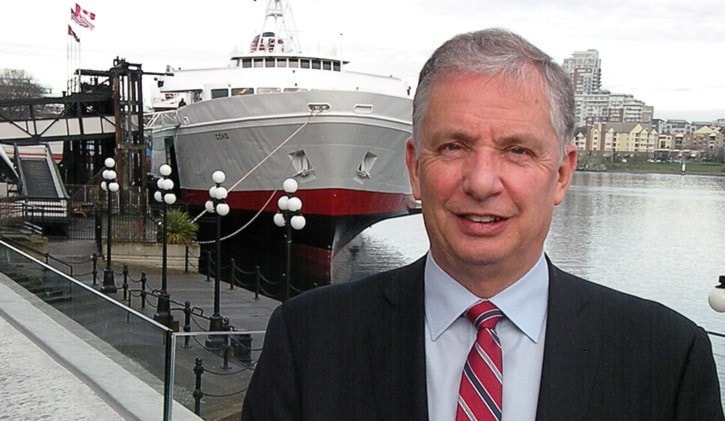Politicians at the B.C. legislature started the week with a debate on the impact of increased oil tanker traffic on the B.C. coast. [, beginning at 1115]
Captain Stephen Brown, president of the , visited Victoria Feb. 13 to speak to provincial affairs reporters about the state of shipping and the prospects for the future. Here are highlights of his discussion with Tom Fletcher, legislature reporter and columnist for Black Press:
TF: Are you trying to raise the profile of the Chamber of Shipping?
SB: Some would say we have a high profile. Certainly in Vancouver in the marine industry where we have about 180 members, we actually have a pretty high profile. And here on Vancouver Island we have a long-standing Island committee that meets regularly in Nanaimo.
TF: Does the Chamber of Shipping have an official position on the TransMountain pipeline expansion proposal, on the Northern Gateway proposal?
SB: We don't advocate for any project in particular. The role of the Chamber of Shipping, being a marine industry association, is to talk about how we go about our business. The projects, whether it's Northern Gateway or TransMountain or the various LNG projects, whether it's the export of coal, there are many aspects to all of those.
What we are qualified to talk about is the marine safety aspects of those projects. And of course marine safety is one of the issues that comes up continually. Because of our membership's experience and knowledge, we are in a position to talk, with some credibility I believe, on the marine safety aspects of those projects.
TF: The province hired a consultant to look at shipping safety, and one of the points that came out of that was that there is more container and bulk shipping than there is petroleum shipping on our coast. And just the bunker fuel load on those ships represents probably more volume on the water than petroleum in tankers. Do you think the public understands that?
SB: I don't think there is an appreciation of that. Today, the fuel that most ships are using is marine heavy fuel. We do use lighter fuel when we're in B.C. waters because of the emissions standards, however we do have that heavy fuel on board.
There is a belief that the level of traffic on the coast of British Columbia is heavy, and any expansion of that traffic is going to become problematic. In reality, we have some of the lowest levels of marine traffic in the developed world. It's not busy by any international standard.
Port of Vancouver handles just over 3,000 ships a year on average. It's Canada's largest port. The port of Rotterdam handles about 32,000 ships a year, and it's also quite a narrow choke point getting in and out of Rotterdam. I've done it many times.
And if you look at the Port of Singapore, in 2013 they had 140,000 arrivals. So that's a ship more or less every five minutes. So I think you can see we have a lot of room to grow, irrespective of what type of traffic it is.
TF: And Long Beach, California has more traffic?
SB: It does, albeit largely container traffic. but they do actually have a large tanker trade into California, in fact Very Large Crude Carriers, which are the biggest of the big tankers, actually come directly alongside in the Port of Long Beach and discharge.
TF: I've discussed with people about the Alaska crude tankers that go by Victoria on a daily basis, into the big refinery complexes at March Point and Cherry Point in Washington, and I sometimes have to convince people that they actually exist.
SB: It's been going on for many years. It's not as big as it used to be, but it's still going to be going on for many more years.
TF: The Ioco oil refinery in Port Moody was completed in 1914, so it's been 100 years of crude traffic in and petroleum products out from Vancouver.
SB: It was the first, and I often refer to the fact that we have had a century of moving liquid products in and out of the Lower Mainland. In terms of the Westridge terminal [shipping point for the TransMountain pipeline], which is the one that people are focusing on, it's got a 60-year history of moving product out with no incidents whatsoever.
For many of those years, the technology of tankers was not what it is today, but nevertheless, even with the rudimentary technologies, they still had an impeccable safety record.



